Most everyone knows that when I recently got new tires I also redid the white walls. The originals I did with Elastometric paint (see http://www.hondashadow.net/forum/72-technical-discussion/110790-my-road-rod.html). However, this time I had chose to test out white Plasti Dip based on experience with coating other items, and it's overall resilience.
Stepping forward approximately a month, and having some really nice weather here I went for a ride yesterday covering about 150 miles. I noticed this when I got home:
![Image]()
Bah, well fart on a stick!
... damn.
Somehow the tire rubbed up in the fender well. By the looks of it, actually inside the metal fender support/fork stabilizer. So I started disassembling the fender to have a looksy. I put the under-structure back on to gain a better perspective into exactly what happened:
![Image]()
![Image]()
![Image]()
I can see a slight difference left-to-right whereas the bracket is a bit bent and skewed to one side (see pics above). However, I just haven't a clue how the hell the tire actually rubbed up inside the bracket. In this pic I circled where it rubbed as is evident from not only the WWW being rubbed off, but markings inside the bracket.
![Image]()
Can the tire actually flex that much? I did hit some gnarly bumpy roads for about a 5 mile stretch at 55mph, and a few sweeping corners around 70mph, but nothing crazy. Huh ... I'm stumped. Maybe something got caught up in there for a short time?
Well anyway, there is good news in all this. The white Plasti Dip I put on only about a month ago or so really darkened. Actually so much to a point of unacceptable to me. So I stripped all the PD off the tires and went back to the Elastometric paint I used the first time around. These following pics show the color differences with some notations:
The pile of PD stripped from one side. It comes off easy enough, but it's time consuming because it really grabs on to the tire. That actually is a good thing.
![Image]()
These following pics show some stages of color. The tire laying on the ground was my original rear tire from when I bought the bike last year. It has the Elastometric paint on it. On top of it I laid a piece of the Plasti Dip I just removed from the newer tire today. The tire on the bike (background) I just painted fresh Elastometric today. Note how the Elastometric lasted for about a year and half with only slight tanning (acceptable). Now look at the PD I did just last month ... horrible. While the PD discolored very quickly, I will note too that the original Elastometric went through some punishment as well and still looks that good (e.g. using the shovel to break the bead when I removed the tire).
Outside, in shade, clear day/no clouds, no flash:
![Image]()
Outside, in shade, clear day/no clouds, *flash*:
![Image]()
Outside, in direct sun, clear day/no clouds, no flash:
![Image]()
![Image]()
![Image]()
Nice color details, eh? Anyway, after removing all the PD I took a few pics of the bike. All I can say is .... ew. There is proof in how the WWW's make this bike. I don't use the expression, but in this case - they really 'pop'. Here's the ugly:
![Image]()
![Image]()
It just looks weird to me.
To sum up ... Plasti Dip has it's pros and cons as use for white walls. The pro is that it comes in an aerosol and the end result is as smooth as silk! The con is that apparently the color turns really fast from white to brown. Elastometric paint's pro is that it's more durable and the color last longer. The only con I can think of is that it has to be rolled on, or brushed. I mask off and roll it.
Hopefully this will assist anyone with their dreams and hopes of creating their own WWW's.
Stepping forward approximately a month, and having some really nice weather here I went for a ride yesterday covering about 150 miles. I noticed this when I got home:
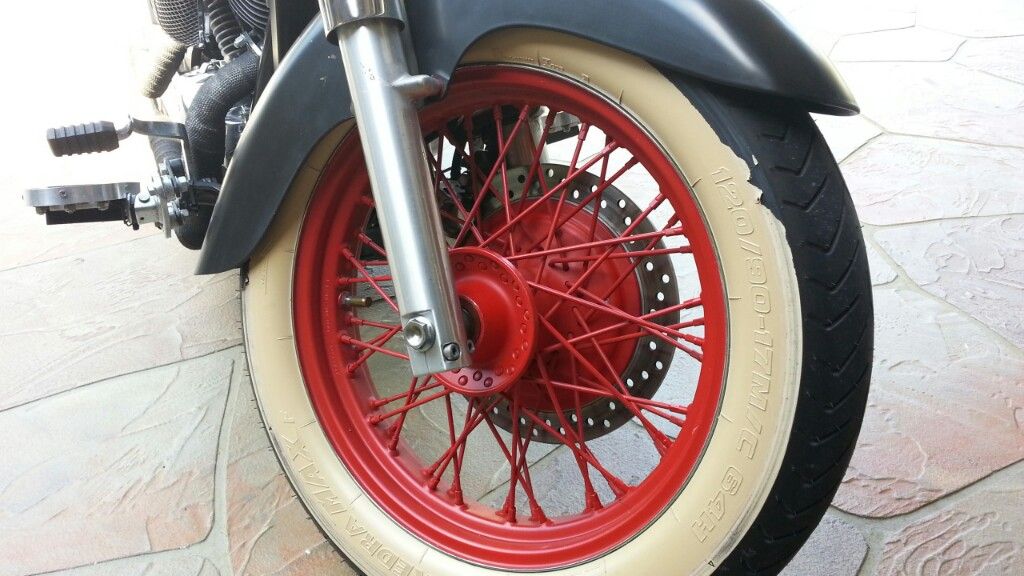
Bah, well fart on a stick!
... damn.
Somehow the tire rubbed up in the fender well. By the looks of it, actually inside the metal fender support/fork stabilizer. So I started disassembling the fender to have a looksy. I put the under-structure back on to gain a better perspective into exactly what happened:
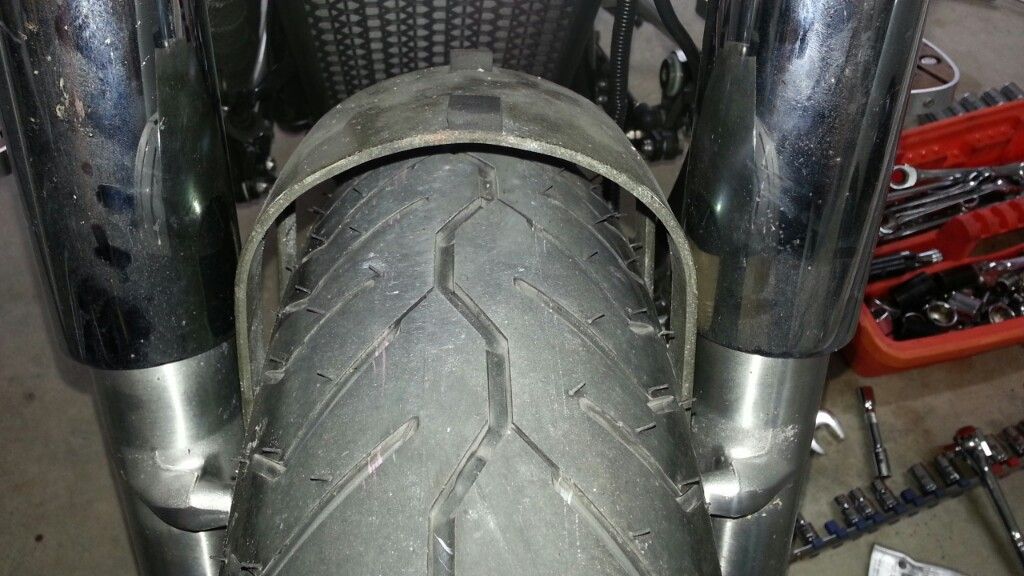
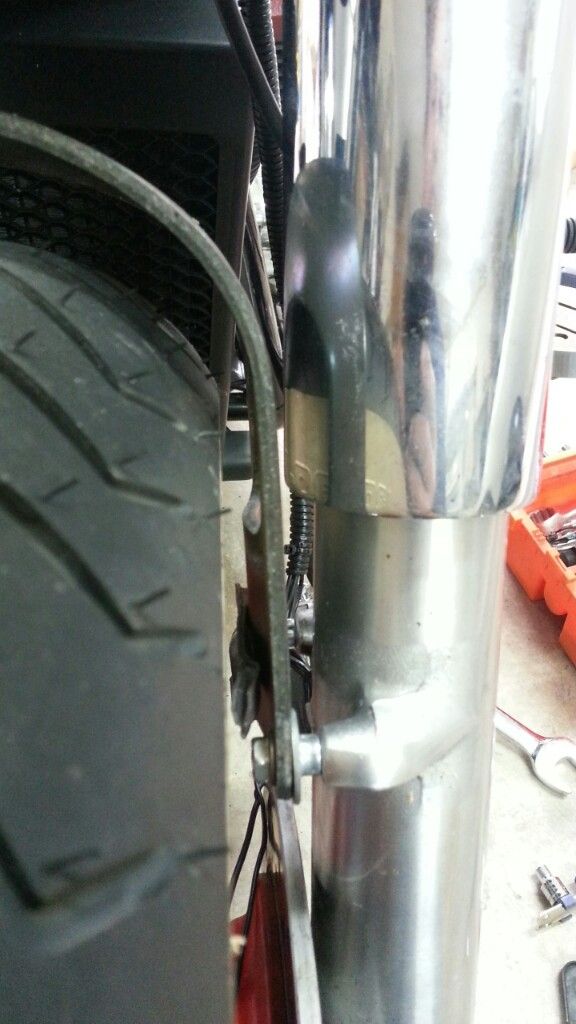
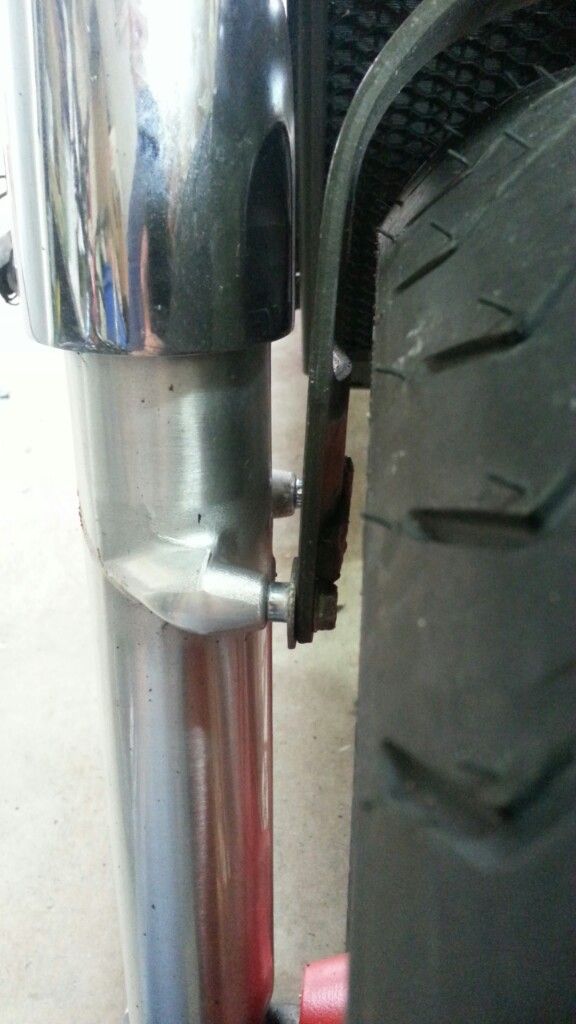
I can see a slight difference left-to-right whereas the bracket is a bit bent and skewed to one side (see pics above). However, I just haven't a clue how the hell the tire actually rubbed up inside the bracket. In this pic I circled where it rubbed as is evident from not only the WWW being rubbed off, but markings inside the bracket.
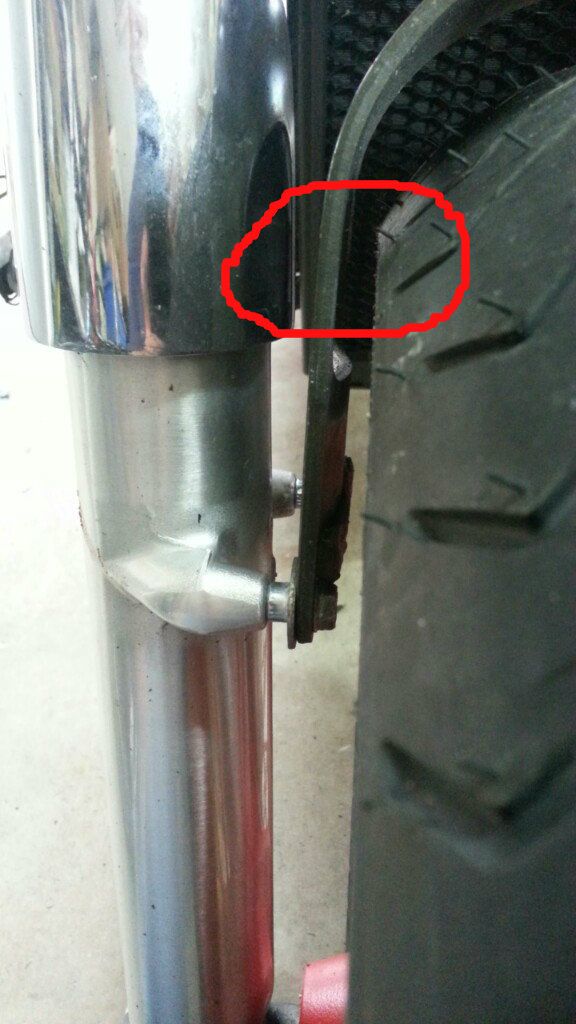
Can the tire actually flex that much? I did hit some gnarly bumpy roads for about a 5 mile stretch at 55mph, and a few sweeping corners around 70mph, but nothing crazy. Huh ... I'm stumped. Maybe something got caught up in there for a short time?
Well anyway, there is good news in all this. The white Plasti Dip I put on only about a month ago or so really darkened. Actually so much to a point of unacceptable to me. So I stripped all the PD off the tires and went back to the Elastometric paint I used the first time around. These following pics show the color differences with some notations:
The pile of PD stripped from one side. It comes off easy enough, but it's time consuming because it really grabs on to the tire. That actually is a good thing.
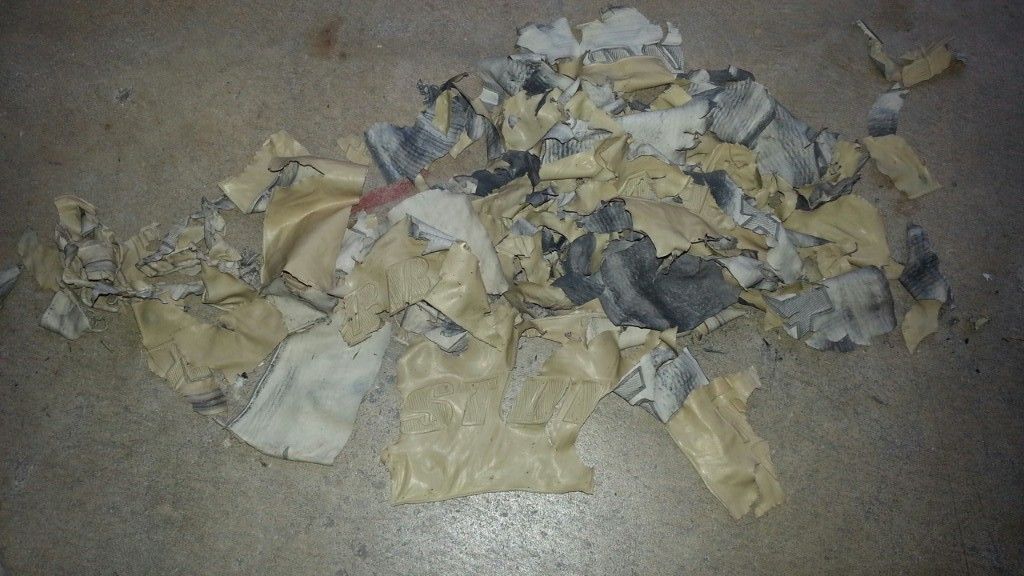
These following pics show some stages of color. The tire laying on the ground was my original rear tire from when I bought the bike last year. It has the Elastometric paint on it. On top of it I laid a piece of the Plasti Dip I just removed from the newer tire today. The tire on the bike (background) I just painted fresh Elastometric today. Note how the Elastometric lasted for about a year and half with only slight tanning (acceptable). Now look at the PD I did just last month ... horrible. While the PD discolored very quickly, I will note too that the original Elastometric went through some punishment as well and still looks that good (e.g. using the shovel to break the bead when I removed the tire).
Outside, in shade, clear day/no clouds, no flash:
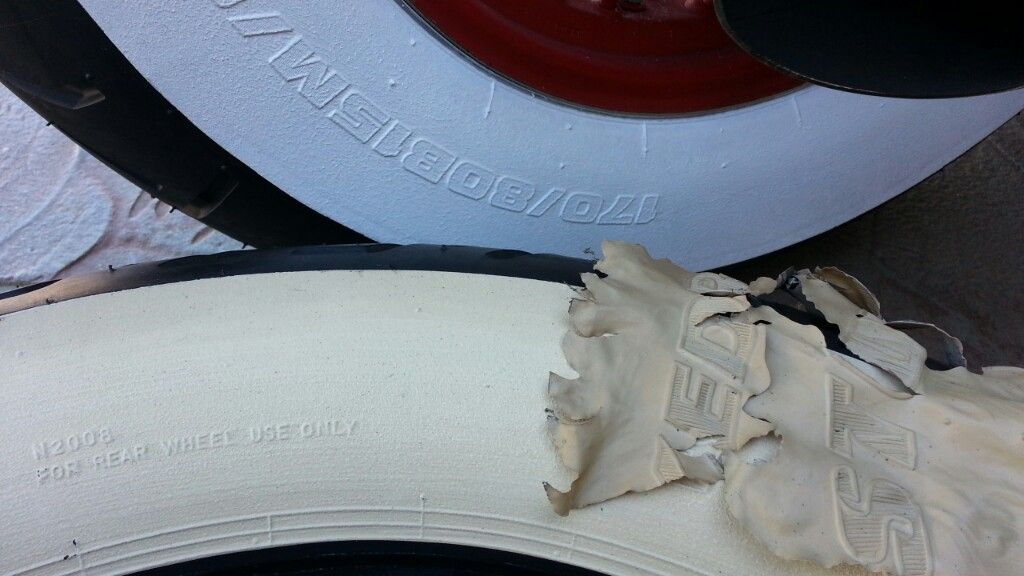
Outside, in shade, clear day/no clouds, *flash*:
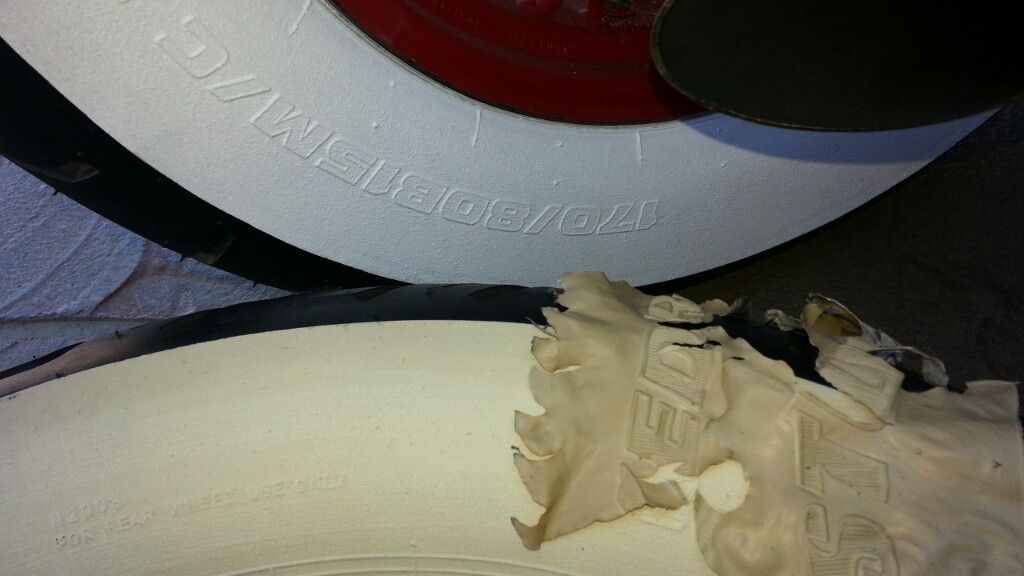
Outside, in direct sun, clear day/no clouds, no flash:
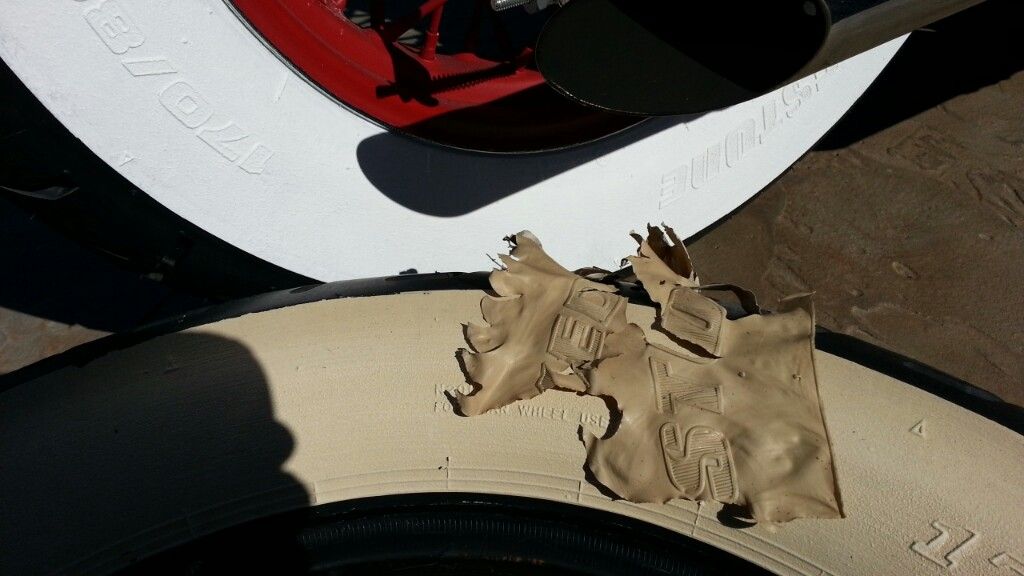
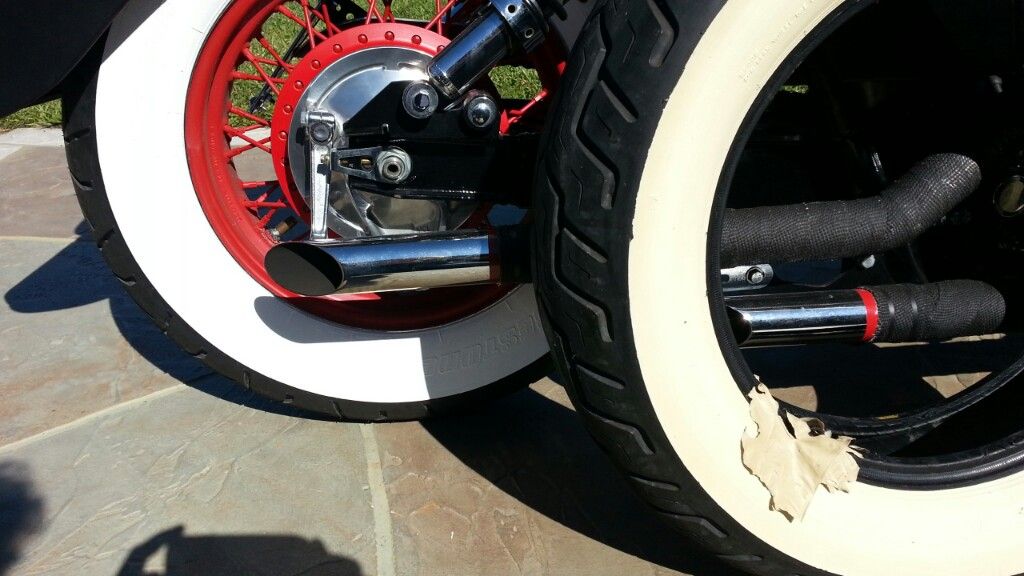
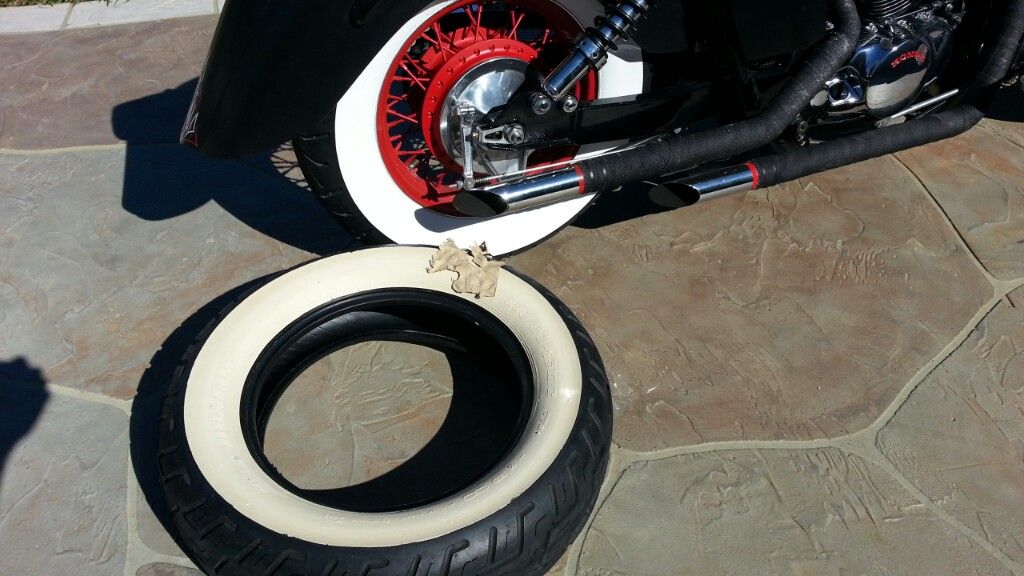
Nice color details, eh? Anyway, after removing all the PD I took a few pics of the bike. All I can say is .... ew. There is proof in how the WWW's make this bike. I don't use the expression, but in this case - they really 'pop'. Here's the ugly:
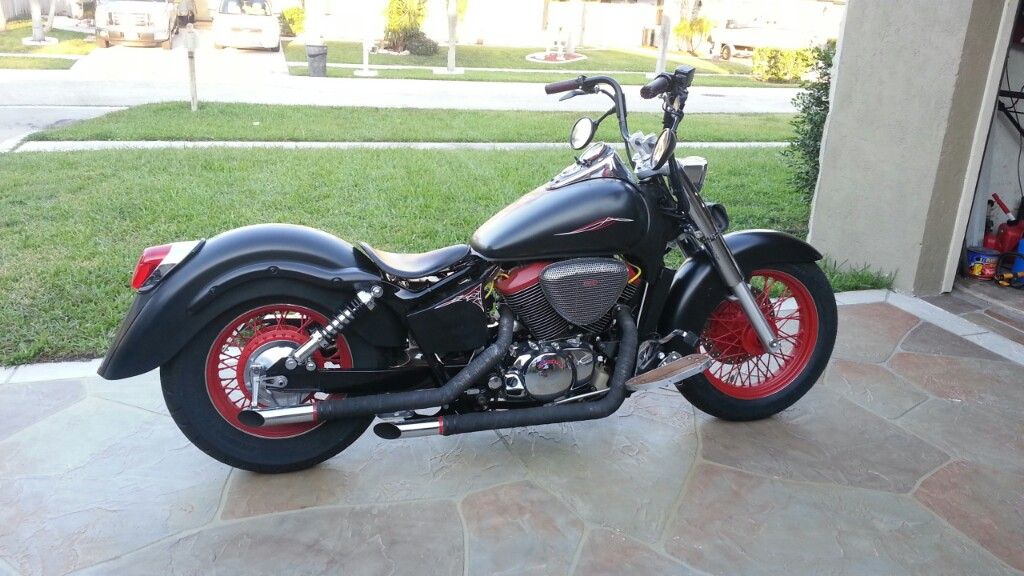
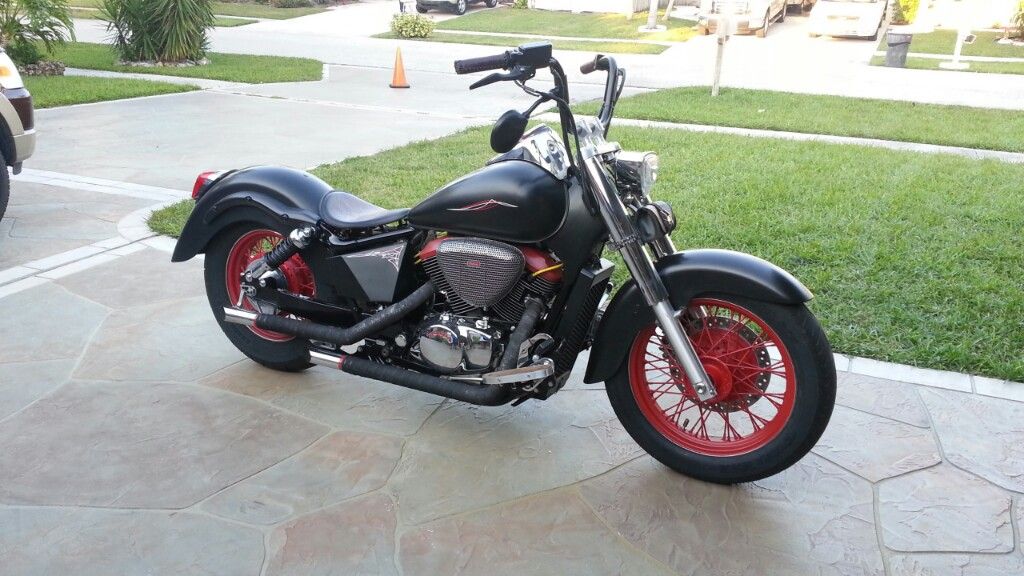
It just looks weird to me.
To sum up ... Plasti Dip has it's pros and cons as use for white walls. The pro is that it comes in an aerosol and the end result is as smooth as silk! The con is that apparently the color turns really fast from white to brown. Elastometric paint's pro is that it's more durable and the color last longer. The only con I can think of is that it has to be rolled on, or brushed. I mask off and roll it.
Hopefully this will assist anyone with their dreams and hopes of creating their own WWW's.




